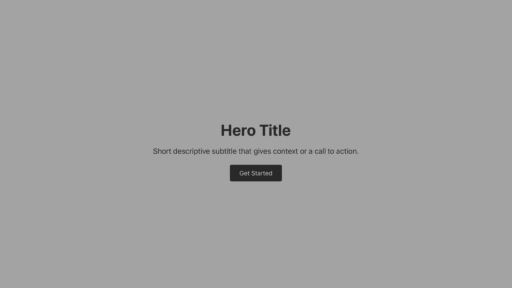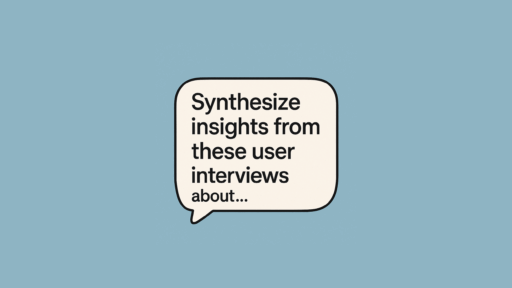Design teams face a recurring problem that costs them influence, credibility, and project momentum. They walk into presentation rooms confident about their research findings. Within minutes, executives shut them down.
The issue isn’t the quality of your design work. Your research is solid, your insights are valuable, and your recommendations make sense. However, you’re asking decision-makers to spend thousands of dollars based on five minutes of information.
The Car Dealership Problem: Why Executives Resist Design Recommendations
Think about the traditional car buying experience. A salesperson shows you models and immediately asks for a purchase decision. You know nothing about safety ratings, competitor pricing, or long-term value.
That interaction created tension because of information asymmetry. Salespeople held all the knowledge while buyers operated in the dark. Modern car shopping flipped this dynamic completely.
Today, buyers research online before stepping into dealerships. They compare reviews, check safety ratings, and analyze pricing data. Consequently, they arrive prepared and comfortable making significant financial decisions.
Your design presentations mirror the old car dealership model. Executives encounter your recommendations for the first time during the meeting. Meanwhile, you expect them to approve budgets worth tens of thousands of dollars immediately.
The Black Box Problem: Removing Mystery From Your Presentations
Designers typically announce: “I want to present what I found through user testing.” This statement creates a black box for your audience.
Decision-makers don’t know whether you’ll report minor issues or critical failures requiring major pivots. Therefore, they enter the room defensive rather than collaborative.
Two Strategies to Eliminate Surprise
Create a Detailed Agenda: Share specific topics before the meeting. Instead of “user testing results,” write “Discussion of checkout process friction identified in user testing.” This simple change helps stakeholders prepare mentally for the conversation.
Distribute Executive Summaries Early: Send a one-page preliminary report highlighting key findings and recommendations beforehand. Additionally, this approach transforms the meeting from “UX presents findings” to “Team discusses whether redesigning checkout makes business sense.”
These preparation strategies shift power dynamics. Stakeholders arrive informed rather than ambushed. Furthermore, you position yourself as a collaborative partner rather than an information gatekeeper.
Understanding Your Audience: The Designer’s Blind Spot
Most designers create presentations for other designers. They assume audiences understand UX terminology, value qualitative research, and appreciate design nuance.
Your actual audience lacks this context. Executives haven’t spent weeks analyzing user behavior or observing interaction patterns. Moreover, they care primarily about business outcomes rather than design principles.
Before preparing any presentation, answer these questions clearly:
- Who makes the final decision in this meeting?
- What specific action do I need them to take?
- What motivates this stakeholder personally?
- Which business metrics matter most to them?
Understanding stakeholder motivations helps you anticipate objections. Spending time with decision-makers before formal presentations pays enormous dividends.
The Prioritization Weakness That Kills Designer Credibility
Designers struggle with a critical skill that executives value highly: ruthless prioritization. When you present twenty user findings and label ten as “critical priority,” you’ve essentially communicated nothing useful.
From a usability perspective, maybe all ten issues genuinely deserve attention. However, decision-makers operate under resource constraints. They need clear answers to straightforward questions.
“If we only have resources for three improvements this sprint, which three should we tackle first?”
This question sits at the heart of what executives need from design presentations. Answering it requires balancing user needs against business reality.
How to Present Priorities That Resonate With Leadership
Rank your findings using business impact metrics, not just usability severity. Consider factors like:
- Revenue impact potential
- Number of users affected
- Implementation complexity
- Alignment with company OKRs
- Competitive positioning value
When you frame recommendations this way, executives see you as a strategic partner. Alternatively, listing everything as equally important makes you seem disconnected from business realities.
Decisions Happen Before the Meeting (Not During)
Here’s an uncomfortable truth: major decisions rarely happen in the actual presentation room. Executives make multimillion-dollar calls after hours of consideration, not five-minute pitches.
Many formal meetings simply make decisions official. The real work happens in hallway conversations, one-on-one discussions, and strategic planning sessions.
Designers often miss this reality entirely. They prepare brilliant presentations but skip the crucial pre-meeting groundwork. Therefore, their recommendations get shot down despite solid research backing them.
The Pre-Meeting Strategy That Changes Everything
Schedule informal conversations with key stakeholders before your formal presentation. Share preliminary findings and gauge reactions early.
During these conversations, you’ll discover:
- Hidden concerns about your recommendations
- Political dynamics affecting decision-making
- Budget constraints you weren’t aware of
- Competing priorities consuming stakeholder attention
This intelligence helps you adjust your approach before committing to a formal pitch. Subsequently, the actual presentation becomes easier because you’ve already addressed major objections privately.
The Translation Problem: Speaking Executive Language
Design doesn’t have a value problem. Design has a translation problem. Designers do valuable work but explain it using designer language to non-designer audiences.
Stop presenting to executives as if they’re designers. They don’t care about interaction patterns, information architecture, or usability heuristics unless you connect these concepts to business outcomes.
Instead of saying “We identified seven usability issues in the checkout flow,” try “Users abandon purchases at a 40% rate because the checkout process creates friction. Fixing these three specific issues could recover $2M in annual revenue.”
The underlying research is identical. However, the framing resonates completely differently with decision-makers focused on financial performance.
Building Pre-Meeting Momentum: Your Action Plan
Transform your presentation approach by implementing these concrete steps:
- Send detailed agendas three days before meetings specifying discussion topics
- Create one-page executive summaries highlighting key findings and business impact
- Schedule 15-minute pre-meetings with decision-makers to gauge reactions
- Rank recommendations by business value, not just usability severity
- Speak in terms of revenue, conversion rates, and customer satisfaction scores
- Prepare answers to “which three things matter most” before you present
- Learn what motivates each stakeholder personally through casual conversations
These tactics require more upfront work. Nevertheless, they dramatically increase your influence and approval rates.
Why This Matters for Your Career
Designers who master stakeholder communication advance faster than those who focus solely on craft excellence. Your design skills matter, but your ability to drive decisions matters more.
When executives consistently approve your recommendations, you gain credibility throughout the organization. This credibility leads to better projects, larger budgets, and strategic influence.
Conversely, designers who get shot down repeatedly become marginalized. Their research gets ignored, their recommendations get deprioritized, and their career growth stalls.
Some designers push back against this reality. They believe their work should speak for itself. Maybe that’s true in an ideal world, but we operate in the real world where presentation skills determine impact.
The Bottom Line
Stop presenting design recommendations like used car salespeople pushing immediate purchases. Start creating buying experiences that prepare decision-makers thoroughly before asking for commitments.
Your research deserves better than five-minute consideration. Give stakeholders the context, preparation, and business framing they need to make confident decisions.
When you remove mystery, speak executive language, and build pre-meeting momentum, your appr






